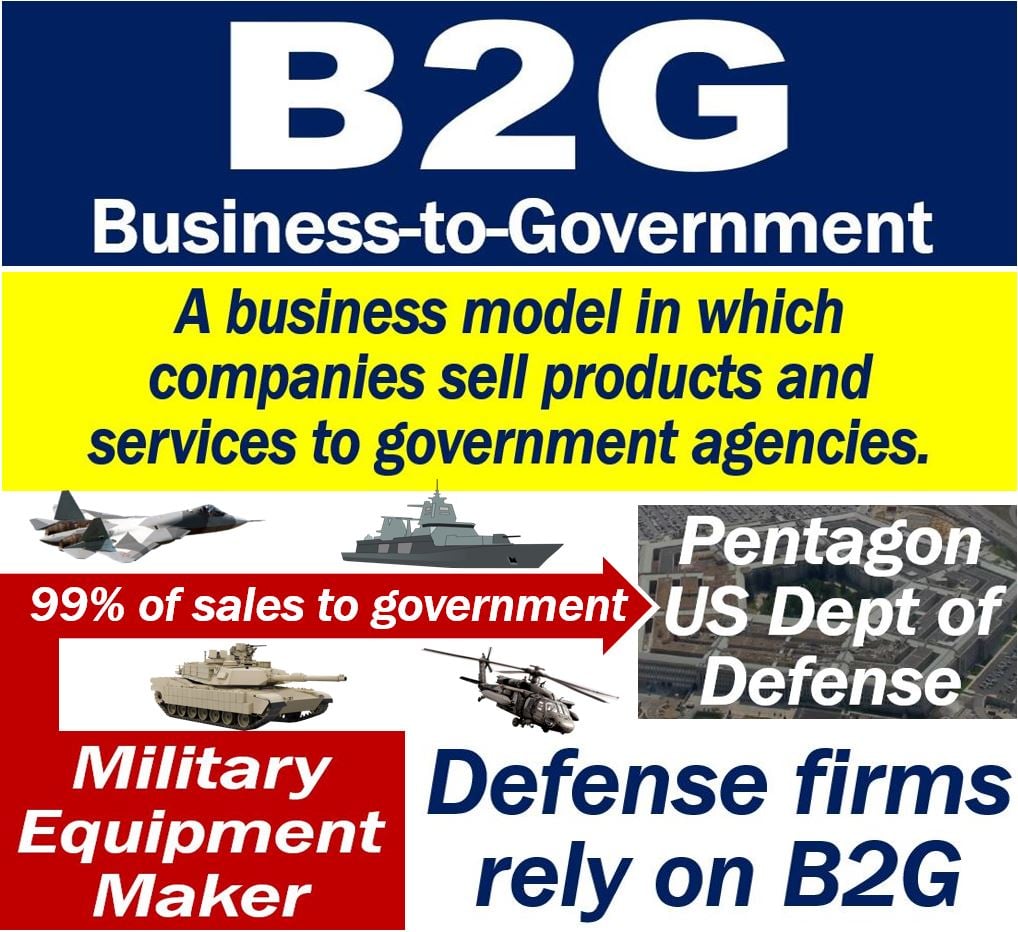B2G, which stands for business-to-government, refers to the business relationship a company can have with a government institution. It commonly refers to the offering of products, services, or information online. However, we use the term for traditional business procedures too.
We also call this way of doing business B2A, which stands for business-to-administration. The term refers to a company doing business either with the government or the public sector.
With $11 trillion in global government procurement spending annually, this sector accounts for roughly 12% of global GDP. It offers extraordinary opportunities for businesses.
In the United States alone, the federal government spent over $750 billion on contracts in fiscal year 2024.
And it’s not only the Fortune 500 (large companies) that benefit. In fiscal year 2024, small businesses in the US captured a record-breaking $183 billion in prime federal contracts. This accounts for roughly 28.8 percent of the government’s total contract spend.
To’ – not ‘two’
Remember that in its short form – B2G – the number ‘2‘ stands for the word ‘to‘ in ‘business-to-government.’ When you write the long form, do not write ‘business-two-government.’ That is wrong!
B2G – bids and tenders
In many cases, government agencies work with pre-negotiated contracts. The government puts out tenders which companies bid for.
To put out a tender means to ask companies to say formally how much they would charge for a project.
We call each formal submission a ‘bid.’ The government selects one of the bidders, and that company gets the B2G contract.
These contracts exist at national, state, or local level.

For some specialist defense contractors, up to 99% of their revenue can come from government customers. In contrast, diversified suppliers in sectors such as IT or healthcare may generate between 20% and 80% of their sales from the public sector. These sectors rely on the public sector for a substantial portion of their revenue. This shows just how widely B2G dependence can vary.
If it weren’t for B2G, most defense contractors, such as Lockheed Martin, would be much smaller companies. The defense market is a monopsony, i.e., a single buyer dominates the market. That single buyer, in this case, is the government.
B2G contracts
In the US, the General Services Administration (GSA) issues these types of B2G contracts.
The GSA purchases billions of dollars worth of services and products through contracts each year. The GSA oversees the central purchasing system. Its Multiple Award Schedule program is a long-term, government-wide purchasing vehicle. This program lets federal, state, and local agencies tap into a vast catalog of commercial goods and services.
The Multiple Award Schedule program alone recorded sales of $51.5 billion in FY 2024.
Rejecting bids
The GSA may reject bids for many different reasons. If the public institution has acquired the service of a certain company before, it may reject its bid. It may also turn down a bid if the bidder already has an ongoing project with the public institution.
The GSA may reject those bids because it wants to give other companies a chance. In other words, it wants to make sure that all players compete on a level playing field.
The GSA purchased IT (equipment, software, and service), construction, and medical equipment and supplies. It also bought cleaning and food services.
In fact, the GSA purchased hundreds of different B2G products and services.
Some B2G networks provide a way for companies to bid to government agencies or projects.
B2G – IT
IT stands for information technology. Information technology is the use of computer hardware and software. IT includes computers, networking, storage, infrastructure, software, and the exchange of electronic data.
IT contracts between companies and government departments are very common. Every public institution needs IT goods and services.
The GSA purchases new computers, term software licenses, and wireless services. It also secures maintenance contracts and cloud computing services.
Real examples
- SpaceX began with a $278 million COTS deal in 2006 and by 2024 had banked an additional $1.436 billion for five crew missions.
- Palantir: Revenue from the US government revenue hit $1.2 billion in FY 2024, accounting for more than half of its total US revenue of $1.90 billion.
- OpenAI: On 16 June 2025 the Pentagon awarded the AI startup a $200 million contract. This contract, the Pentagon said, was decided on “to address critical national security challenges in both warfighting and enterprise domains”.
B2G and five others
Business-to-government is one of six business models. The others are:
- B2B (business-to-business). This means companies selling to other companies.
- C2C (consumer-to-consumer). This model involves consumers selling to other consumers. If I sell my car to my next-door-neighbor, that is a C2C transaction.
- G2B (government-to-business). This means government selling to businesses.
- B2C (business-to-consumer). In this model, companies sell to consumers. For example, a supermarket, i.e., a business, sells to us, i.e., consumers.
- G2C (government-to-consumer or government-to-citizen). When the government gives somebody a tax rebate, that is a G2C transaction.
Updated July 01 2025 by:
